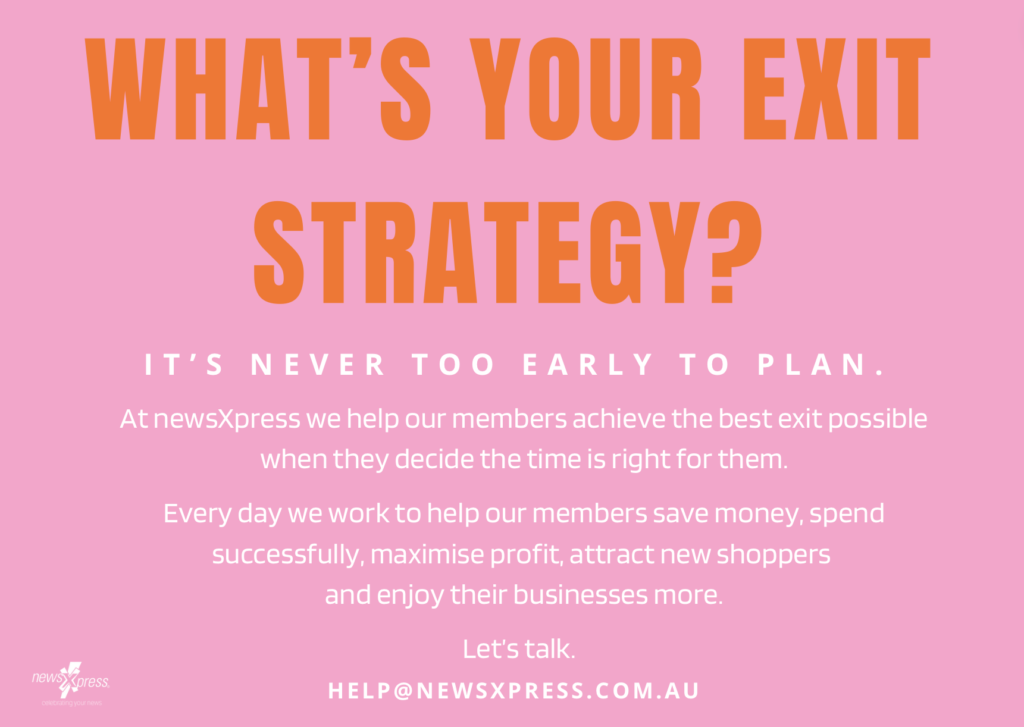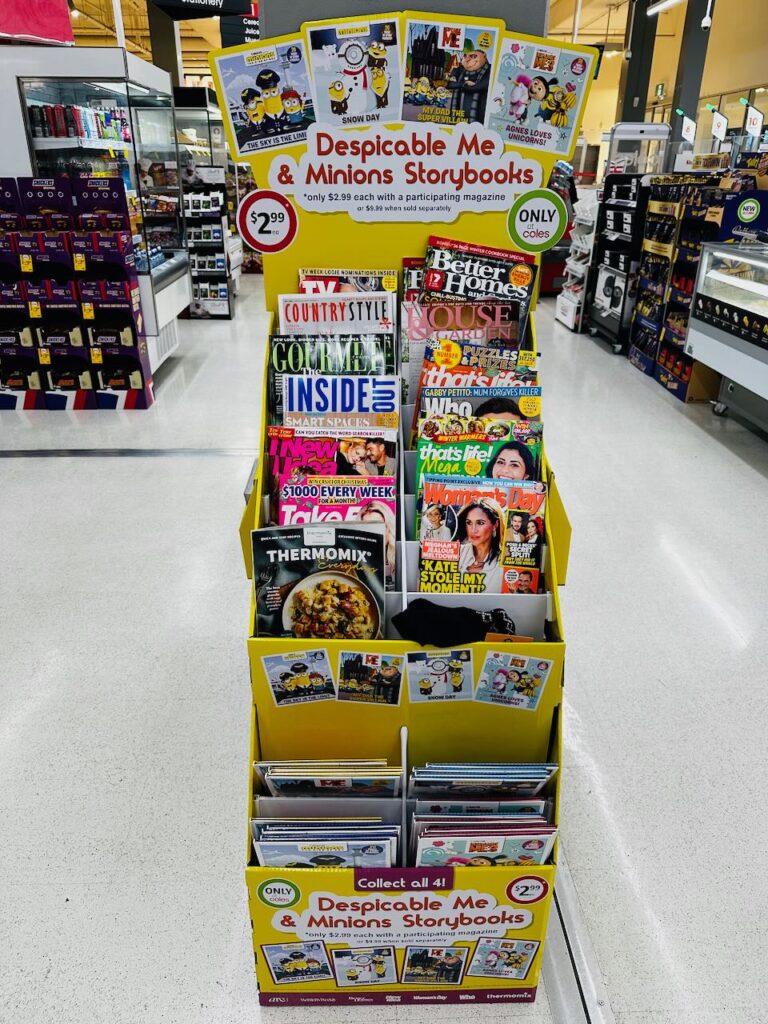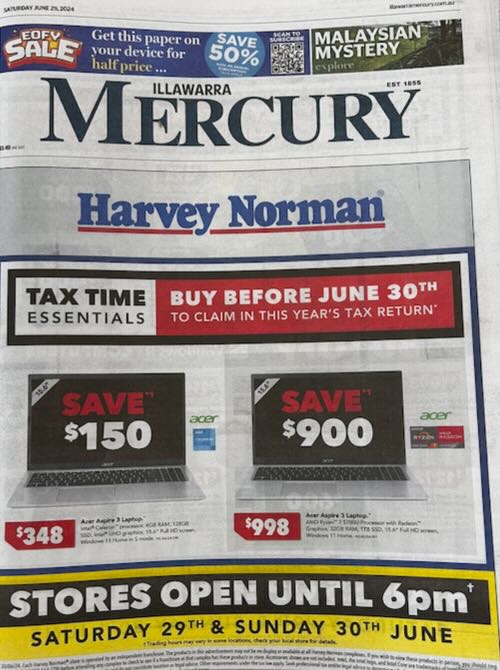Thank you mediaweek for covering newsagent concerns about ABC news report on newsagents
mediaweek this morning has this morning reported on our concerns about ABC reporting earlier this week on newsagency closures.
ABC report that newsagency sector in decline fails to investigate closures, claims retailer by mediaweek Editor-In-Chief James Manning accurately reports our concerns. I am especially grateful for this coverage:
How the newsagency business model could look
“A typical country town newsagency today should be making less than 10% of their turnover from print media products, 30% of revenue from lottery commission and 60% from gifts, homewares, books, toys and more. That is, 60% of revenue from items delivering 50% and more gross profit.”
Fletcher has long been a critic of the support newsagencies received from publishers over the years. But he notes it should not be the reason for a failing business.
“You can’t blame the decline in print for newsagencies closing. Newsagents make a paltry margin from print products. It’s disrespectful, and embarrassing how little we make. A business closing because of this is a business rooted in the past.
“Smart newsagents started transforming their businesses 20 years ago.”
Fletcher finished with a final blast for ABC News:
“If the folks at ABC News did even basic research about the future of Australian newsagencies they could have provided more accurate reporting on the state of newsagency businesses in Australia.
“Do better ABC News.”
I am thankful to get this support for the channel out there compared to the reported comments by Brendan Tohill from VANA. Sheesh.
Let’s take a moment to look at the performance of print media products in our shops and for our channel.
Newspapers.
Newsagents make between 10% and 12.5% of the cover price. For the Herald Sun Monday to Friday, that’s .375 cents a copy. @ 50 copies a day, that’s $18.75. Considering the weekend cover price and sales, a medium size newsagency, selling 50 copies of the title each day will make under $7,000 a year in gross profit. Labour cost for managing the title over the year in that size business will be at least $4,500 while retail space will cost at least $2,000 without considering a premium for better positioning in-store.
Newspapers remain inefficient products. Around 75% of newspaper purchases are a single newspaper. I know this because of basket analysis for hundreds of newsagencies over many years. No amount of in-store effort has been successful in changing the basket efficiency of newsagencies.
Magazines.
Newsagents make 25% of the cover price. Thanks to cover price suppression of major titles, in real terms we make less today than five years ago.
In an average size newsagency selling $80,000 worth of magazines a year, gross profit is $20,000.00. Labour cost for the year managing magazines is $12,000.00. That can balloon out if there in an increase in missed deliveries. Theft of magazines costs around $2,000 a year, which lands at net $1,500.00. (My understanding is that supermarkets do not cover the cost of magazine theft.) magazine space in this average newsagency costs around $15,000.00. This average newsagency is losing money on magazines.
Magazines are more efficient than newspapers with single product baskets accounting for only 40% of all baskets.
Traffic generators.
For more than five years, print media products have not been valuable traffic generators for newsagents. While for sure that are people buying the daily paper or their weekly magazines, those shoppers are not the valuable shoppers that make money for newsagents. Indeed, thanks to basket analysis and tracking loyalty offer engagement, magazines especially are the impulse purchase if a shopper has bonus loyalty dollars to spend.
Print media suppliers don’t understand.
Our print media suppliers have management practices that are out of date, rooted in the days when our channel was tightly regulated. These poor practices cost us money. They think their products drive valuable traffic for us. They don’t. They think they make good money for us. They don’t.
Print media does matter tho.
What we don’t know is the value of print media customers who, on other visits, purchase other items from our shops. There is anecdotal evidence, but nothing you could rely on in court. The may to make the category work is to tightly manage space and hope that suppliers lift their game and drag their data management processes into 2024.
Why plenty of newsagents are thriving.
Many newsagents have transitioned their businesses to sell high end gifts, sought after collectibles and other products people will drive and hour or two to source. We have newsagents doing well with books and others doing well with coffee. Many newsagents have websites that reach people way beyond their local area. Some, too, with websites that have nothing to do with their newsagency businesses.
The shingle.
While news outlets and suppliers consider us a channel, we’re not a channel and have not been for many years. You can’t go into a newsagency expecting they will have what you want if your expectation is rooted in decades ago.
I don’t think the shingle matters. What matters is what shoppers feel when they enter your businesses. If they step into a shop that nurtures a feeling of comfort and happiness and offers them a treasure hunt retail experience they will tell others, and they will come back. The shingle above the door is irrelevant.
This is what’s interesting abut plenty of newsagents today. They are retailers, not agents, not shopkeepers. This is what the poor reporting of the ABC neglected.
Here, again, are videos I have done with the owners of three newsagencies that are anything but traditional newsagency businesses. Each business is inspiring:
The Aussie newsagency has as bright a future as each newsagency business owner allows.




